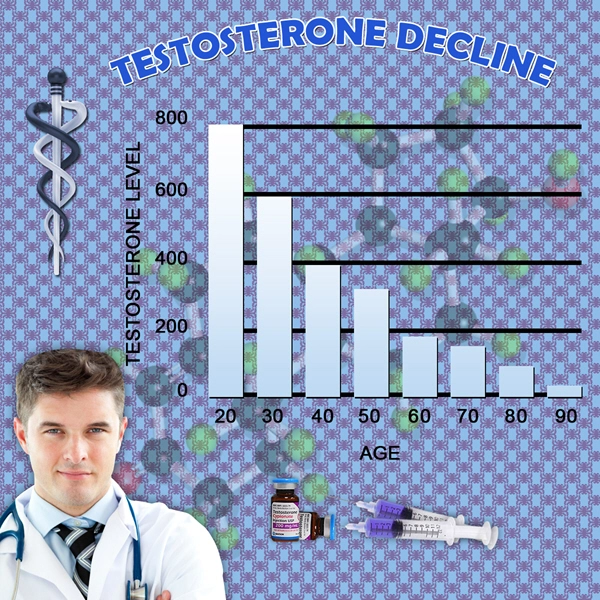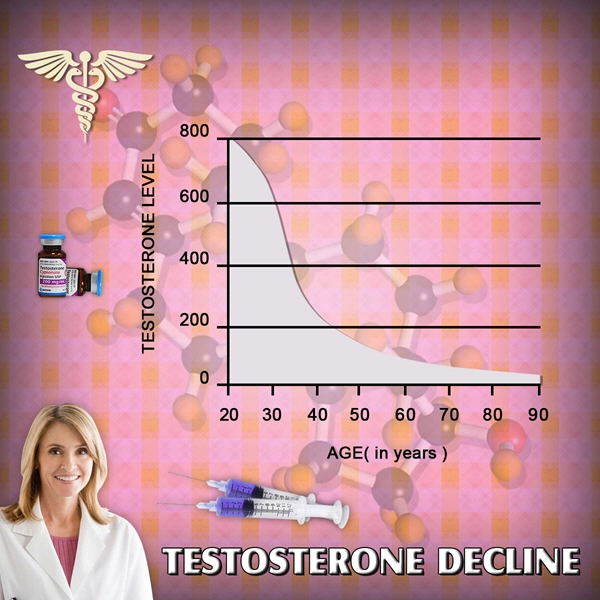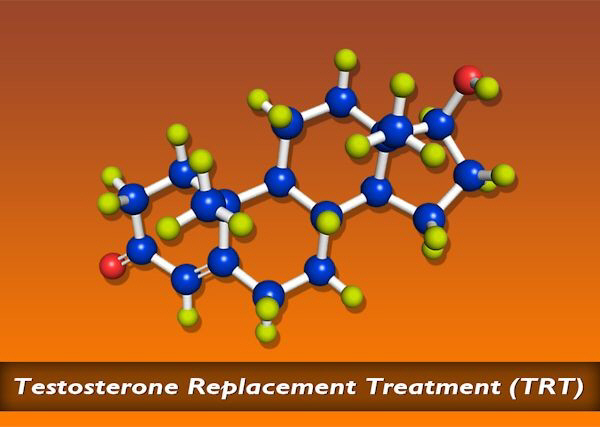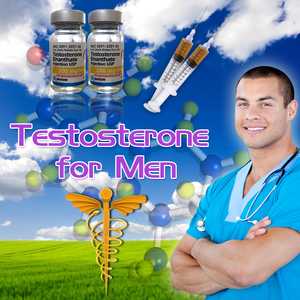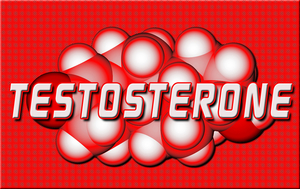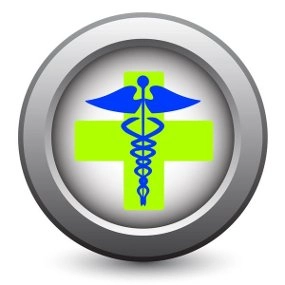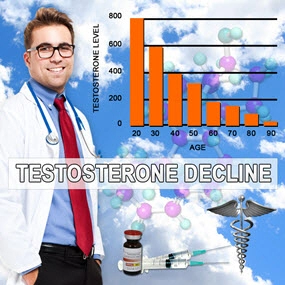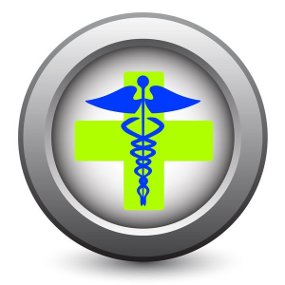Introduction
Testosterone replacement therapy (TRT) has become increasingly prevalent among American men seeking to mitigate the effects of hypogonadism and age-related testosterone decline. Vogelxo, a topical testosterone gel, has been a popular choice due to its ease of use and efficacy. However, the cardiovascular implications of long-term TRT use remain a subject of intense scrutiny. This article delves into a three-year study examining the effects of Vogelxo on blood pressure and hypertension in American males, offering critical insights into its cardiovascular safety profile.
Study Design and Methodology
The study followed a cohort of 500 American males aged 40 to 70, diagnosed with hypogonadism, over a three-year period. Participants were randomly assigned to either the Vogelxo group, receiving daily applications of the gel, or the control group, receiving a placebo. Blood pressure measurements were taken at baseline, every six months, and at the end of the study. Hypertension was defined according to the American Heart Association guidelines, with systolic blood pressure ?130 mmHg or diastolic blood pressure ?80 mmHg.
Results on Blood Pressure
The findings indicated a nuanced impact of Vogelxo on blood pressure. At the six-month mark, the Vogelxo group exhibited a statistically significant increase in systolic blood pressure compared to the control group (p<0.05). However, this trend did not persist, and by the end of the three-year period, there was no significant difference in systolic or diastolic blood pressure between the two groups. This suggests that while Vogelxo may cause a transient elevation in blood pressure, its long-term effect on blood pressure appears to be neutral.
Hypertension Incidence and Management
Interestingly, the incidence of new-onset hypertension was similar between the Vogelxo and control groups, with rates of 12% and 11%, respectively. This finding challenges the notion that TRT universally increases the risk of hypertension. Moreover, among participants who were hypertensive at baseline, those in the Vogelxo group showed better management of their condition, with a higher percentage achieving target blood pressure levels compared to the control group (65% vs. 55%, p<0.05). This could be attributed to the potential cardiovascular benefits of testosterone, such as improved vascular function and reduced arterial stiffness.
Cardiovascular Safety Considerations
While the study did not observe a significant increase in hypertension risk or sustained blood pressure elevation with Vogelxo use, cardiovascular safety remains a paramount concern. Participants were monitored for cardiovascular events, including myocardial infarction and stroke, and no significant differences were found between the groups. However, the study's sample size and duration may limit the ability to detect rare but serious cardiovascular events. Therefore, clinicians should continue to monitor cardiovascular risk factors closely in patients on TRT.
Implications for Clinical Practice
The results of this study suggest that Vogelxo can be a safe option for testosterone replacement in American males, provided that blood pressure is monitored, especially during the initial months of therapy. Clinicians should educate patients about the potential for transient blood pressure increases and the importance of lifestyle modifications to manage cardiovascular risk. Additionally, the study underscores the need for personalized medicine approaches, where TRT is tailored to the individual's cardiovascular profile and response to therapy.
Conclusion
In conclusion, the three-year study on the impact of Vogelxo testosterone gel on blood pressure and hypertension in American males provides reassuring data regarding its cardiovascular safety. While a transient increase in systolic blood pressure was observed, this effect did not persist, and the overall incidence of hypertension remained comparable to the control group. These findings contribute to the ongoing dialogue about the safety and efficacy of TRT, emphasizing the importance of vigilant monitoring and individualized patient care. As research continues, it is crucial for healthcare providers to stay informed and adapt their practices to ensure the best outcomes for their patients.
Contact Us Today For A Free Consultation
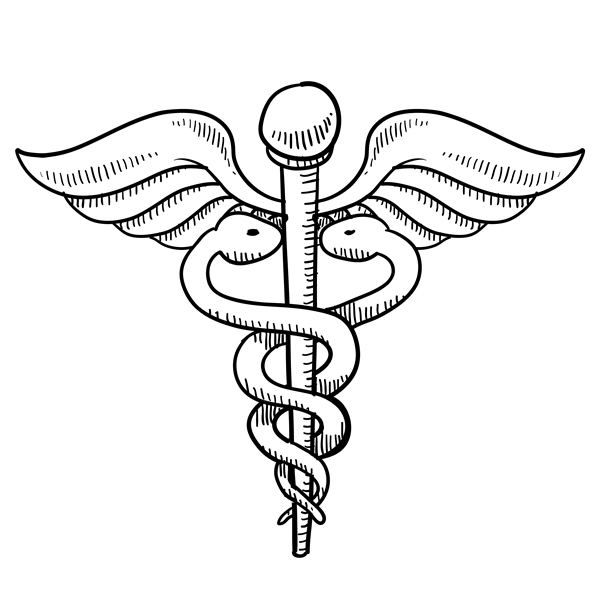
- Vogelxo Testosterone Gel: Benefits, Risks, and Long-Term Health Effects in American Men [Last Updated On: March 17th, 2025] [Originally Added On: March 17th, 2025]
- Vogelxo Testosterone Gel: Enhancing Health and Vitality in American Men [Last Updated On: March 18th, 2025] [Originally Added On: March 18th, 2025]
- Vogelxo: Effective Testosterone Gel for American Men's Low T Symptoms [Last Updated On: March 18th, 2025] [Originally Added On: March 18th, 2025]
- Vogelxo Testosterone Gel: Dermatological Effects and Management for American Males [Last Updated On: March 19th, 2025] [Originally Added On: March 19th, 2025]
- Vogelxo Pharmacokinetics in American Males: Absorption, Distribution, Metabolism, Excretion [Last Updated On: March 20th, 2025] [Originally Added On: March 20th, 2025]
- Vogelxo's Effects on Cardiovascular Health: Risks and Benefits for American Men [Last Updated On: March 20th, 2025] [Originally Added On: March 20th, 2025]
- Vogelxo Gel: Restoring Vitality in American Men with Declining Testosterone [Last Updated On: March 21st, 2025] [Originally Added On: March 21st, 2025]
- Vogelxo Testosterone Gel: Enhancing Physical Performance in American Men [Last Updated On: March 21st, 2025] [Originally Added On: March 21st, 2025]
- Vogelxo: Enhancing Male Vitality with Testosterone Gel Therapy [Last Updated On: March 21st, 2025] [Originally Added On: March 21st, 2025]
- Vogelxo and Sleep: Navigating Testosterone Therapy's Impact on American Men's Sleep Patterns [Last Updated On: March 21st, 2025] [Originally Added On: March 21st, 2025]
- Vogelxo: Enhancing Cognitive Function in American Males with Testosterone Therapy [Last Updated On: March 21st, 2025] [Originally Added On: March 21st, 2025]
- Vogelxo Testosterone Gel: Enhancing Emotional Well-being in American Men [Last Updated On: March 21st, 2025] [Originally Added On: March 21st, 2025]
- Vogelxo Testosterone Gel: Dispelling Myths and Enhancing Understanding for American Men [Last Updated On: March 22nd, 2025] [Originally Added On: March 22nd, 2025]
- Vogelxo: Enhancing Life for Men with Low Testosterone - Insurance and Access Guide [Last Updated On: March 22nd, 2025] [Originally Added On: March 22nd, 2025]
- Vogelxo Testosterone Gel: Tailored Solution for American Men's Hormone Therapy [Last Updated On: March 22nd, 2025] [Originally Added On: March 22nd, 2025]
- Vogelxo: Enhancing Diabetes Management in American Men with Testosterone Therapy [Last Updated On: March 22nd, 2025] [Originally Added On: March 22nd, 2025]
- Vogelxo: Enhancing Weight Management in American Males with Hypogonadism [Last Updated On: March 22nd, 2025] [Originally Added On: March 22nd, 2025]
- Vogelxo: Managing Low Testosterone in American Men - Application, Outcomes, and Safety [Last Updated On: March 23rd, 2025] [Originally Added On: March 23rd, 2025]
- Vogelxo Testosterone Gel: Enhancing American Male Health and Wellness [Last Updated On: March 23rd, 2025] [Originally Added On: March 23rd, 2025]
- Vogelxo: Enhancing Respiratory Health in American Men with Testosterone Gel [Last Updated On: March 23rd, 2025] [Originally Added On: March 23rd, 2025]
- Vogelxo: Maximizing Benefits for American Men with Low Testosterone [Last Updated On: March 23rd, 2025] [Originally Added On: March 23rd, 2025]
- Vogelxo Testosterone Gel: Enhancing Life for American Men with Hypogonadism [Last Updated On: March 24th, 2025] [Originally Added On: March 24th, 2025]
- Vogelxo Testosterone Gel: Benefits, Liver Risks, and Management for American Men [Last Updated On: March 24th, 2025] [Originally Added On: March 24th, 2025]
- Vogelxo Testosterone Gel: Benefits, Fertility Risks, and Reproductive Health Considerations [Last Updated On: March 24th, 2025] [Originally Added On: March 24th, 2025]
- Vogelxo Testosterone Gel: Impacts on Hearing and Ear Health in American Men [Last Updated On: March 24th, 2025] [Originally Added On: March 24th, 2025]
- Vogelxo Testosterone Gel: Efficacy and Safety in American Males with Hypogonadism [Last Updated On: March 25th, 2025] [Originally Added On: March 25th, 2025]
- Vogelxo Testosterone Gel: Enhancing Skin Health and Rejuvenation in American Men [Last Updated On: March 25th, 2025] [Originally Added On: March 25th, 2025]
- Vogelxo: Enhancing Life for American Men with Low Testosterone [Last Updated On: March 25th, 2025] [Originally Added On: March 25th, 2025]
- Vogelxo Testosterone Gel: Impacts on Skin Health and Safety for American Men [Last Updated On: March 25th, 2025] [Originally Added On: March 25th, 2025]
- Vogelxo Testosterone Gel: Impacts on Nervous System and Safety for American Men [Last Updated On: March 25th, 2025] [Originally Added On: March 25th, 2025]
- Vogelxo Testosterone Gel: Impacts on Immune System in American Men [Last Updated On: March 25th, 2025] [Originally Added On: March 25th, 2025]
- Vogelxo's Impact on Prostate Health in American Men: Benefits and Risks [Last Updated On: March 25th, 2025] [Originally Added On: March 25th, 2025]
- Vogelxo Testosterone Gel: Impacts on Digestive Health in American Men [Last Updated On: March 25th, 2025] [Originally Added On: March 25th, 2025]
- Vogelxo: Testosterone Gel's Impact on Vision and Eye Health in American Men [Last Updated On: March 25th, 2025] [Originally Added On: March 25th, 2025]
- Vogelxo: Testosterone Gel for Men - Benefits, Risks, and Usage Guidelines [Last Updated On: March 25th, 2025] [Originally Added On: March 25th, 2025]
- Vogelxo Testosterone Gel: Effects on Blood Pressure and Heart Rate in American Men [Last Updated On: March 26th, 2025] [Originally Added On: March 26th, 2025]
- Vogelxo: Enhancing American Men's Vitality with Testosterone Gel [Last Updated On: March 26th, 2025] [Originally Added On: March 26th, 2025]
- Vogelxo: Testosterone Gel's Impact on Dental Health in American Men [Last Updated On: March 26th, 2025] [Originally Added On: March 26th, 2025]
- Vogelxo Testosterone Gel: Enhancing Male Health and Vitality [Last Updated On: March 26th, 2025] [Originally Added On: March 26th, 2025]
- Vogelxo Testosterone Gel: Enhancing Muscle Recovery and Fitness in American Men [Last Updated On: March 26th, 2025] [Originally Added On: March 26th, 2025]
- Vogelxo: Testosterone Gel's Impact on Hair Loss in American Men [Last Updated On: March 26th, 2025] [Originally Added On: March 26th, 2025]
- Vogelxo: Enhancing Joint Health in American Men Through Testosterone Gel Therapy [Last Updated On: March 27th, 2025] [Originally Added On: March 27th, 2025]
- Vogelxo: Enhancing Hip and Knee Health in American Men with Testosterone Therapy [Last Updated On: March 27th, 2025] [Originally Added On: March 27th, 2025]
- Vogelxo: Enhancing Mental Health in American Men with Testosterone Therapy [Last Updated On: March 27th, 2025] [Originally Added On: March 27th, 2025]
- Vogelxo: Enhancing Neck and Shoulder Health in American Men with Testosterone Therapy [Last Updated On: March 28th, 2025] [Originally Added On: March 28th, 2025]
- Vogelxo: Testosterone Gel's Impact on Kidney Function in American Men with Hypogonadism [Last Updated On: March 28th, 2025] [Originally Added On: March 28th, 2025]
- Vogelxo: Testosterone Gel's Role in Pain Management for American Men [Last Updated On: March 28th, 2025] [Originally Added On: March 28th, 2025]
- Vogelxo: Enhancing Foot and Ankle Health in Men with Low Testosterone [Last Updated On: March 28th, 2025] [Originally Added On: March 28th, 2025]
- Vogelxo: Enhancing American Men's Back Health Through Testosterone Therapy [Last Updated On: March 29th, 2025] [Originally Added On: March 29th, 2025]
- Vogelxo: Enhancing Elbow and Arm Health in American Men with Low Testosterone [Last Updated On: March 29th, 2025] [Originally Added On: March 29th, 2025]
- Vogelxo Testosterone Gel: Enhancing Nail Health in American Men [Last Updated On: March 30th, 2025] [Originally Added On: March 30th, 2025]
- Vogelxo Gel: Enhancing Hand and Wrist Health in American Men with Hypogonadism [Last Updated On: March 30th, 2025] [Originally Added On: March 30th, 2025]
- Vogelxo: Enhancing Chest and Abdominal Health in American Men with Testosterone Therapy [Last Updated On: April 2nd, 2025] [Originally Added On: April 2nd, 2025]
- Vogelxo: Enhancing Leg and Thigh Health in American Men with Hypogonadism [Last Updated On: April 3rd, 2025] [Originally Added On: April 3rd, 2025]
- Vogelxo's Dual Impact on American Men's Scalp Health: Benefits and Risks [Last Updated On: April 3rd, 2025] [Originally Added On: April 3rd, 2025]
- Vogelxo Testosterone Gel: Impacts and Oral Health Management for American Men [Last Updated On: April 5th, 2025] [Originally Added On: April 5th, 2025]
- Vogelxo: Exploring Testosterone Gel's Impact on Sinus Health in American Men [Last Updated On: April 8th, 2025] [Originally Added On: April 8th, 2025]
- Vogelxo: Testosterone Gel's Impact on Throat and Voice Health in Men [Last Updated On: April 8th, 2025] [Originally Added On: April 8th, 2025]
- Vogelxo's Impact on Lung Health in American Men: Benefits and Risks [Last Updated On: April 8th, 2025] [Originally Added On: April 8th, 2025]
- Vogelxo: Enhancing Facial Health in American Men Through Testosterone Gel [Last Updated On: April 9th, 2025] [Originally Added On: April 9th, 2025]
- Vogelxo Testosterone Gel: Impacts on Male Reproductive Health and Fertility [Last Updated On: April 10th, 2025] [Originally Added On: April 10th, 2025]
- Vogelxo Testosterone Gel: Enhancing Blood Health in American Men with Hypogonadism [Last Updated On: April 11th, 2025] [Originally Added On: April 11th, 2025]
- Vogelxo Testosterone Gel: Effects on Skin, Hair, and Nails in American Men [Last Updated On: April 12th, 2025] [Originally Added On: April 12th, 2025]
- Vogelxo: Enhancing Musculoskeletal Health in American Men with Hypogonadism [Last Updated On: April 12th, 2025] [Originally Added On: April 12th, 2025]
- Vogelxo: Enhancing Heart Health in American Men with Low Testosterone [Last Updated On: April 13th, 2025] [Originally Added On: April 13th, 2025]
- Vogelxo: Enhancing Urinary Health in American Men with Hypogonadism [Last Updated On: April 13th, 2025] [Originally Added On: April 13th, 2025]
- Vogelxo Testosterone Gel: Impacts on Lymphatic System and Health Management for American Men [Last Updated On: April 13th, 2025] [Originally Added On: April 13th, 2025]
- Vogelxo Testosterone Gel: Effects on Digestive System and Management Strategies for American Men [Last Updated On: April 15th, 2025] [Originally Added On: April 15th, 2025]
- Vogelxo Testosterone Gel: Enhancing Muscle, Bone, and Joint Health in American Men [Last Updated On: April 16th, 2025] [Originally Added On: April 16th, 2025]
- Vogelxo: Enhancing Nervous System Health in American Men with Testosterone Gel [Last Updated On: April 16th, 2025] [Originally Added On: April 16th, 2025]
- Vogelxo: Testosterone Gel's Effects on Respiratory Health in Men [Last Updated On: April 17th, 2025] [Originally Added On: April 17th, 2025]
- Vogelxo: Enhancing Nervous System Health in American Men with Testosterone Gel [Last Updated On: April 18th, 2025] [Originally Added On: April 18th, 2025]
- Vogelxo: Enhancing Urinary Health in American Men with Low Testosterone [Last Updated On: April 18th, 2025] [Originally Added On: April 18th, 2025]
- Vogelxo Testosterone Gel: Impact on Cardiovascular Health in American Men [Last Updated On: April 19th, 2025] [Originally Added On: April 19th, 2025]
- Vogelxo Testosterone Gel: Benefits, Risks, and Management for American Men [Last Updated On: April 19th, 2025] [Originally Added On: April 19th, 2025]
- Vogelxo: Enhancing Men's Integumentary Health and Vitality with Testosterone Gel [Last Updated On: April 19th, 2025] [Originally Added On: April 19th, 2025]
- Vogelxo Testosterone Gel: Enhancing Male Reproductive Health and Treating Hypogonadism [Last Updated On: April 20th, 2025] [Originally Added On: April 20th, 2025]
- Vogelxo Testosterone Gel: Efficacy, Benefits, and Considerations for American Men [Last Updated On: April 21st, 2025] [Originally Added On: April 21st, 2025]
- Vogelxo Testosterone Gel: Enhancing Systemic Health in American Men with Hypogonadism [Last Updated On: April 22nd, 2025] [Originally Added On: April 22nd, 2025]
- Vogelxo Testosterone Gel: A Convenient Solution for Low T in American Males [Last Updated On: April 22nd, 2025] [Originally Added On: April 22nd, 2025]
Word Count: 200

